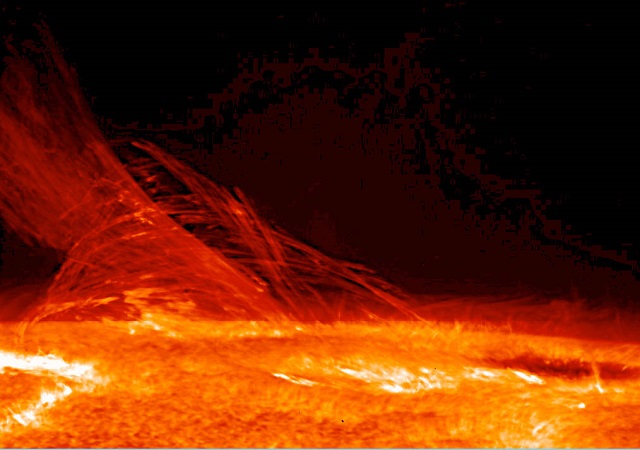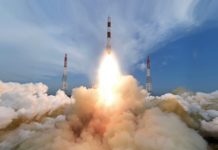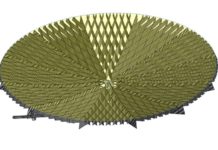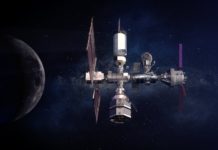On August 12th, NASA launched their Parker Solar Probe on a Delta V from Cape Canaveral. The 1.5 billion USD probe, which is designed to examine the outer corona of our host star, the Sun, will traverse space until reaching its goal in 2024.
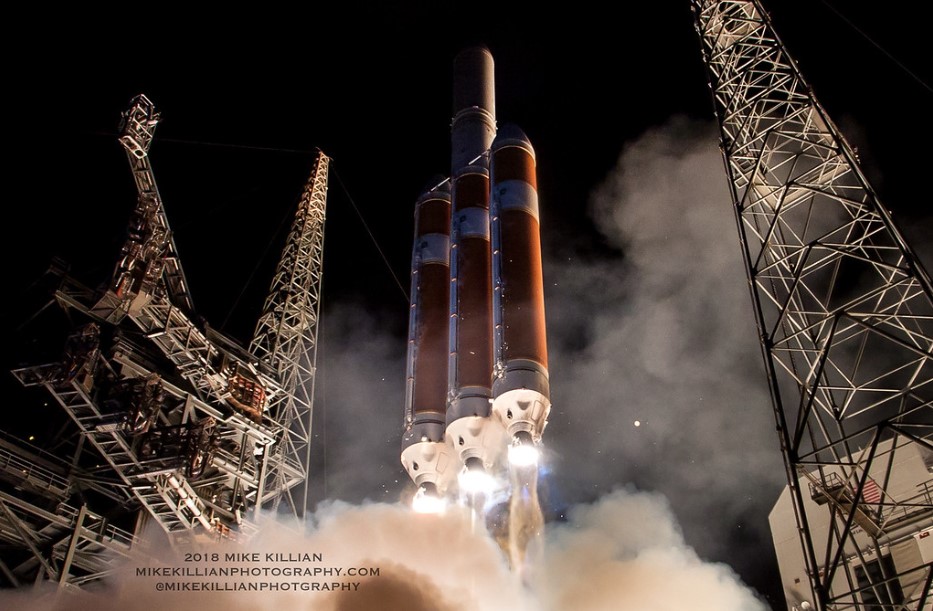
Once at its target, 8.9 solar radii (6.2 million kilometres) from the Sun’s surface, it will begin collecting data on the state of the Sun’s outer corona.
The primary science goals for the mission are to trace how energy and heat move through the solar corona and to explore what accelerates the solar wind as well as solar energetic particles. These goals will be accomplished through 5 main investigations/experiments, which are called:
- FIELDS (Electromagnetic Fields Investigation)
- ISIS (Integrated Science Investigation of the Sun)
- WISPR (Wide-field Imager for Solar Probe)
- SWEAP (Solar Wind Electrons Alphas and Protons)
- HeliOSPP (Heliospheric Origins with Solar Probe Plus)
You can see a description of each of the experiments at this link.
This mission will be the closest that humankind has reached to the surface of the Sun and will also be the fastest spacecraft ever built, reaching velocities of 430,000 mph (692,000 km/h) at its destination. The project hopes to answer decades’ old scientific questions regarding the nature of our Sun.
So it’s the fastest and it’s the closest, and at $1.5 billion USD, it’s the most expensive to date…but it’s definitely not the first solar probe. Asian agencies and organisations have been staring at the Sun for a long time. Albeit from slightly further away.
Here is a brief look at what’s going on in solar observation from Asian nations.
Asian Solar Missions
Japan has been particularly active in solar physics research, having launched 3 solar observatories with a 4th on the way.
Hinotori (Astro-A)
Japan’s first solar observatory was the Hinotori satellite, launched way back in February 1981, and was developed by Japan’s Institute of Space and Astronautical Science (ISAS), which was one of the institutes that merged to create the modern JAXA.
Hinotori was placed into Low Earth Orbit, where it was tasked with observing solar flares that occur during the solar maximum phase. It remained in orbit for ten years where it continued to gather data useful to solar physicists, including first measurements of a superthermal (30,000,000–40,000,000 K) cloud produced by solar flares, which is the source of the soft X-ray burst accompanying all solar flares.
Solar X-ray imaging was fairly primitive back in 1981, as you can see from the image below.
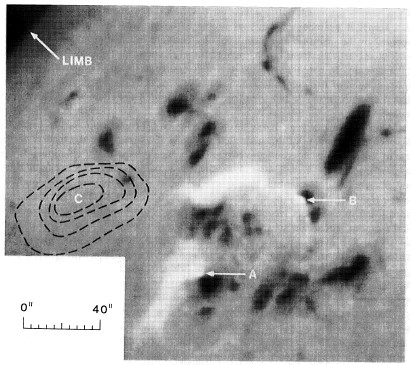
Despite the seemingly low quality of the image, Hinotori was a pioneer in the development of hard X-ray imaging for solar flares.
The 181kg spacecraft contained 51kg of scientific payload, which consisted of:
- SXT (Solar flare X-ray imager)
- SOX (Solar soft X-ray bright line spectrum analyzer)
- HXM (Solar soft X-ray monitor)
- FLM (Solar flare monitor)
- SGR (Solar gamma ray monitor)
- PXM (Particle ray monitor)
- IMP (Plasma electron density measurement instrument)
- TEL (Plasma electron temperature measurement instrument)
Hinotori reentered Earth’s atmosphere on July 11, 1991.
Yohkoh (Solar-A)
Japan’s second mission was the Yohkoh mission (also known as SOLAR-A), which was launched in August 1991 on a Mu-3S-II rocket from the Kagoshima M1 launch site in Japan.
As you can see from the image below, the engineers on Yohkoh really stepped up their imaging game for this mission, thanks to the lessons learned during Hinotori.
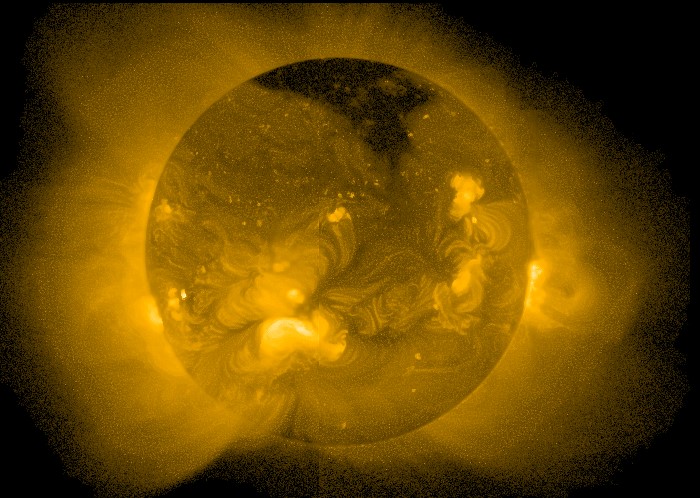
Like Hinotori, the mission was designed and operated by ISAS.
The 390 kg spacecraft was placed into a geocentric orbit where it continued collecting data until an annular solar eclipse caused the spacecraft to lose track of the Sun, forcing the spacecraft into safemode, where it stayed until it burned up during its re-entry in 2005.
A number of instruments were included in the payload:
- SXT (Soft X-ray Telescope)
- BCS (Bragg Crystal Spectrometer)
- WBS (Wide Band Spectrometer)
- HRT (Hard X-ray Telescope)
Over its 10 years of successful operation, the instruments together allowed Yohkoh to complete its primary mission of observing solar flares during maximum period of solar activity, and the observing of coronal behaviour in relation to the behaviour of solar flares.
Hinode (Solar-B)
Launched in September 2006 on an M-V-7 rocket from Uchinoura Space Centre, Hinode is a collaboration between JAXA, NASA and the United Kingdom designed to explore the magnetic fields of the Sun. After launch, the spacecraft was directed to its Sun-synchronous orbit, 600km above the Earth (ideal for constant Sun-gazing).
- SOT (Solar Optical Telescope)
- XRT (X-ray Telescope)
- EIS (Extreme-Ultraviolet Imaging Spectrometer)
Hinode captured this amazing image of a Venus transit with its SOT instrument in 2012.
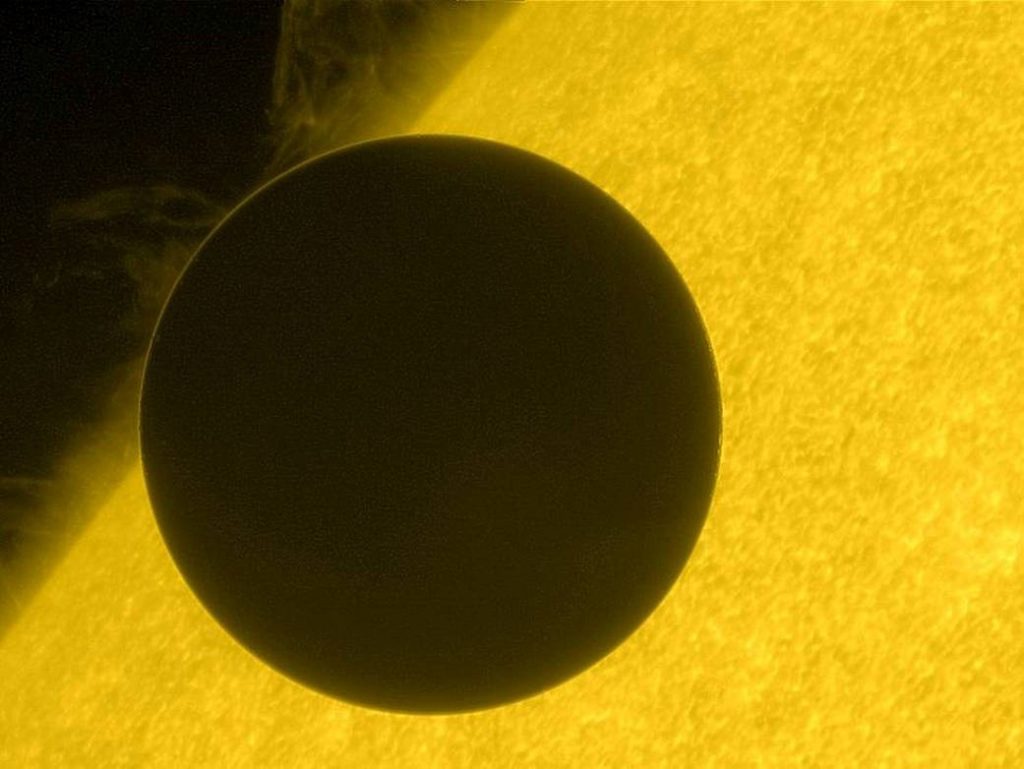
Hinode has completed its original mission and is running in an extended mission mode now. So far funding has been approved until 2019, where the Solar-C mission will replace it. Presumably, Hinode will continue to receive funding as long as it is functioning.
Solar satellites are not cheap- best to milk them for all they are worth!
You can see more of the amazing images from Hinode over at this link.
Solar-C
Following the previous tradition of using a different codename during spacecraft construction, Japan’s fourth solar mission, currently dubbed “Solar-C” will launch in February 2019, according to some reports, and “after 2020” according to others.
If you have enjoyed reading this article, do take a moment to subscribe to our email newsletter here. We will not sell your email address to a third party, and you can unsubscribe at any time.
Following on from observations made by Hinode, Solar-C will reveal the origins of solar activity through the measurement of magnetic fields in the chromosphere.
According to the Max Planck Institute for Solar System Research (who has contributed to one of the instruments), Solar-C will carry the following scientific payloads:
- SUVIT (A Solar Ultraviolet, Visible, and Infrared Telescope)
- XIT (An X-ray or extreme-ultraviolet Imaging Telescope)
- EUVST (The LEMUR Extreme UltraViolet Spectroscopic Telescope)
With a diameter of 1.5 m, SUVIT will be the largest solar telescope to fly in space by a factor of 9, in terms of light-collecting area.
Details are slight on Solar-C at the moment, but we will obviously keep you updated as things develop. Expect some more news soon.
Aditya-L1
While Asian space-based solar observatories have been largely the domain of the Japanese agencies, that is set to change very soon, as ISRO also wants to get a slice of the solar physics action. And they have a spacecraft in development already.
Aditya-L1 will be the first Indian solar mission, and the 1500kg spacecraft is scheduled for launch some time in 2019-2020.
It was originally designated as Aditya-1, and was intended to be sent to a 800km Low Earth Orbit, where it’s original singular instrument (a coronagraph) would observe the solar corona. An unanswered question in solar physics is to understand why the Sun’s corona is a million degrees hotter than the photosphere itself.
The revised mission was to be given an enhanced payload and a new target where it would be allowed to observe the Sun without the risk of eclipses and occultations.
And so Aditya-L1 It will be launched into a halo orbit around the Earth-Sun Lagrange L1 point, approximately 1.5 million kilometres from Earth.
The enhanced payload contains 6 new instruments in addition to the original planned coronagraph.
These instruments are:
- VELC (Visible Emission Line Coronagraph)
- SUIT (Solar Ultraviolet Imaging Telescope)
- ASPEX (Aditya Solar wind Particle Experiment)
- PAPA (Plasma Analyser Package for Aditya)
- SoLEXS (Solar Low Energy X-ray Spectrometer)
- HEL1OS (High Energy L1 Orbiting X-ray Spectrometer)
- Magnetometer
These instruments will enable a comprehensive understanding of the dynamical processes of the sun and address some of the outstanding problems in solar physics, including observations of Sun’s photosphere, chromosphere and corona. In addition Aditiya-1 will study the particle flux and variations in magnetic field strength at the L1 orbit.
And of course, being an ISRO project, it’s given that the mission will aim to deliver optimum science results at an attractive cost. How much is Adity-L1 costing exactly?
According to the Department of Space, the approved cost for Aditya-L1 is 378.53 crore rupees, or roughly 55 million USD.
By comparison, when NASA launched their STEREO solar mission which had similar specifications as Aditya-L1, it cost 460 million USD. Yet again, ISRO is showing the world how to do space at 1/10th of the cost.
It’s going to be an interesting few years in the field of solar physics…and if you’re not a solar physicist, then you can at least enjoy some more awesome pictures of the Sun. Everybody wins!

